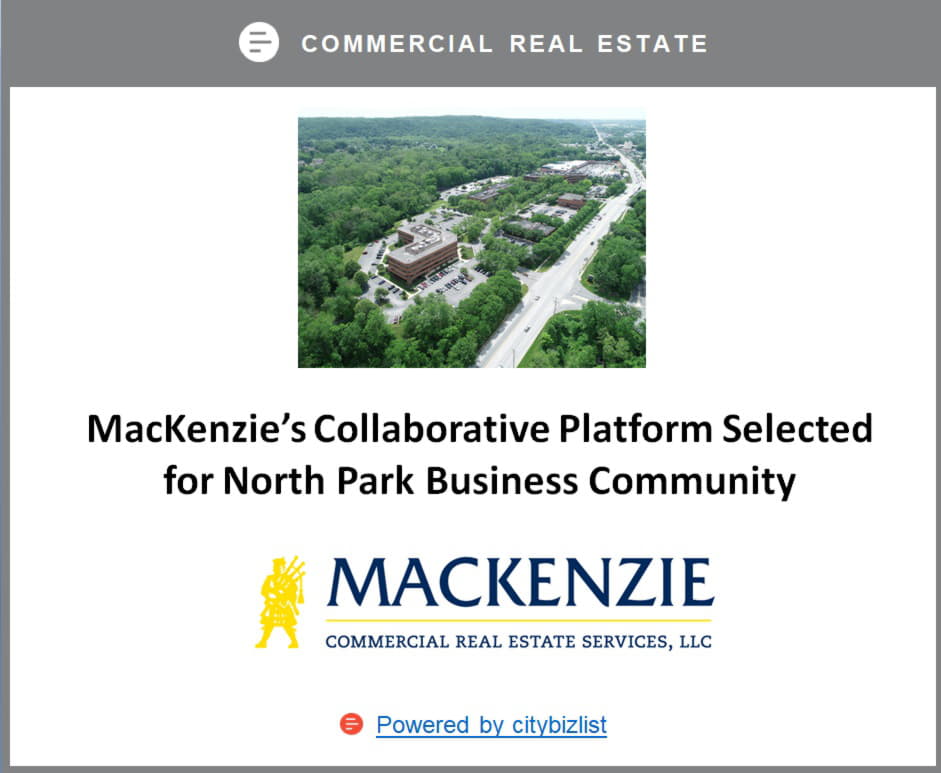HOUSTON, Jan. 28, 2021 (GLOBE NEWSWIRE) -- Kirby Corporation (NYSE: KEX) today announced net earnings attributable to Kirby for the fourth quarter ended December 31, 2020 of $22.2 million or $0.37 per share, compared with $2.8 million or $0.05 per share for the 2019 fourth quarter. Excluding one-time charges in the 2019 fourth quarter, net earnings attributable to Kirby were $34.5 million or $0.58 per share. Consolidated revenues for the 2020 fourth quarter were $489.8 million compared with $655.9 million reported for the 2019 fourth quarter.
For the 2020 full year, Kirby reported a net loss attributable to Kirby of ($272.5) million or ($4.55) per share, compared with net earnings attributable to Kirby of $142.3 million or $2.37 per share for 2019. Excluding one-time items in both years, 2020 net earnings attributable to Kirby were $110.0 million or $1.84 per share, compared with $174.0 million or $2.90 per share for 2019. Consolidated revenues for 2020 were $2.17 billion compared with $2.84 billion for 2019.
David Grzebinski, Kirby’s President and Chief Executive Officer, commented, “During the fourth quarter, the impact of the pandemic on the economy continued to constrain demand in Kirby’s businesses. Although overall demand modestly increased in some areas of distribution and services, there was no improvement in inland and coastal barge utilization in the quarter.
“In marine transportation, our inland and coastal businesses faced continued market weakness and low demand for liquid cargoes including refined products, crude, and black oil. With hurricanes impacting the Gulf Coast in October and a second wave of COVID-19 cases escalating during the quarter, average refinery utilization only began to improve in mid-November and remained well below historical norms for the fourth quarter. These challenging market conditions contributed to continued low barge utilization throughout the quarter, limited spot market activity, and increased pricing pressure.
“In distribution and services, overall activity levels continued to slowly recover during the fourth quarter. In commercial and industrial, we benefited from modest improvements in economic activity, higher Thermo King product revenues, and sales of new marine engines. These improvements were partially offset by seasonality including lower utilization in the power generation rental fleet and reduced major overhauls in marine repair. In the oilfield, improved U.S. frac activity contributed to higher demand for new transmissions, parts, and service; however, total oil and gas revenues declined due to the timing of new pressure pumping equipment deliveries in manufacturing,” Mr. Grzebinski concluded.
Segment Results – Marine Transportation
Marine transportation revenues for the 2020 fourth quarter were $299.4 million compared with $402.0 million for the 2019 fourth quarter. Operating income for the 2020 fourth quarter was $29.2 million compared with $54.5 million for the 2019 fourth quarter. Segment operating margin for the 2020 fourth quarter was 9.7% compared with 13.6% for the 2019 fourth quarter.
In the inland market, average barge utilization was in the high 60% range during the 2020 fourth quarter compared to the low 90% range in the 2019 fourth quarter. Barge volumes were heavily impacted by lower refinery and chemical plant utilization and reduced demand for refined products and petrochemicals. Significant hurricane activity in October also contributed to operational disruptions and lower volumes along the Gulf Coast. As a result of lower barge utilization, average spot market pricing for the quarter declined approximately 10% sequentially and 25% year-on-year. Average term contract pricing on expiring contracts was down in the low double digits. Revenues in the inland market declined 28% compared to the 2019 fourth quarter due to the impact of reduced barge utilization and lower fuel rebills, partially offset by the Savage Inland Marine asset acquisition which closed on April 1, 2020. During the fourth quarter, the inland market represented 75% of segment revenues and had an operating margin in the low to mid-teens.
In the coastal market, reduced demand for refined products and black oil resulted in limited spot market activity, the return of some chartered equipment as term contracts expired, and barge utilization in the mid-70% range. Pricing in the spot market was generally stable; however, average term contract pricing declined in the mid-single digits year-on-year. Revenues in the coastal market declined 18% compared to the 2019 fourth quarter as a result of reduced barge utilization, lower fuel rebills, retirements of three large capacity vessels, and delays associated with hurricanes in the Gulf of Mexico during October. The coastal market represented 25% of segment revenues and had a negative operating margin in the low to mid-single digits during the quarter.
Segment Results – Distribution and Services
Distribution and services revenues for the 2020 fourth quarter were $190.3 million compared with $253.9 million for the 2019 fourth quarter. The segment had an operating loss in the 2020 fourth quarter of ($2.9) million compared to an operating loss of ($2.7) million in the 2019 fourth quarter which included $3.3 million of severance expense. Operating margin was (1.5)% for the 2020 fourth quarter compared with (1.1)% for the 2019 fourth quarter.
In the commercial and industrial market, revenues increased compared to the 2019 fourth quarter primarily due to the contribution from Convoy Servicing Company, a Thermo King distributor which was acquired in January 2020. This increase was partially offset by reduced economic activity which resulted in lower business levels in the on-highway and power generation businesses. The marine repair business was also down year-on-year due to reduced major engine overhaul activity. During the quarter, the commercial and industrial market represented approximately 78% of segment revenues and had an operating margin in the low single digits.
In the oil and gas market, revenues and operating income declined compared to the 2019 fourth quarter due to low oil prices and reduced oilfield activity which resulted in limited customer demand for new and overhauled engines and transmissions, parts and service. The manufacturing business experienced a sharp reduction in orders year-on-year with minimal deliveries of new and remanufactured pressure pumping equipment. During the quarter, the oil and gas market represented approximately 22% of segment revenues and had a negative operating margin in the mid-teens.
Cash Generation
For the 2020 fourth quarter, Adjusted EBITDA was $81.3 million compared with $72.0 million for the 2019 fourth quarter which included $35.5 million of non-cash one-time inventory write-downs. During the quarter, net cash provided by operating activities was $85.1 million, some of which was used to fund capital expenditures of $18.8 million, resulting in free cash flow of $66.3 million. A significant U.S. tax refund in excess of $100 million previously contemplated in Kirby’s cash flow guidance was not received during the 2020 fourth quarter as anticipated and is now expected in the 2021 first quarter. As of December 31, 2020, the Company had $80.3 million of cash and cash equivalents on the balance sheet and $684.1 million of cash and liquidity available. Total debt was $1,468.6 million, reflecting a $109.8 million reduction compared to September 30, 2020, and the debt-to-capitalization ratio was 32.2%.
2021 Outlook
Commenting on the 2021 full year outlook, Mr. Grzebinski said, “Although Kirby’s businesses continue to be challenged by the COVID-19 pandemic and the associated unprecedented declines in demand, we believe that improved business activity and utilization levels will occur in the second half of the year. With the vaccine distribution now underway, it is likely that material improvements in economic activity and increased energy consumption are ahead. We do believe, however, the first half of the year will likely remain challenging until the pandemic eases and refinery utilization materially recovers. In the first quarter, we expect weak market conditions in marine transportation to continue with further pricing pressure on contract renewals. As well, surging cases of COVID-19 across the U.S. have impacted our ability to crew our vessels, resulting in delays and in some cases lost revenue. As a result, we anticipate a sequential reduction in earnings during the first quarter with improving results thereafter as the effects of the pandemic moderate and demand for our products and services steadily increases.”
In inland marine, market conditions are expected to remain challenging in the coming months, with gradual improvement in the second quarter, and a more meaningful recovery in the second half of 2021. Barge utilization is projected to start the year in the low to mid-70% range and improve into the high 80% to low 90% range by the end of the year. Pricing, which typically improves with barge utilization, is expected to remain under pressure in the near-term. Financially, first quarter revenues and operating margin are expected to be the lowest of the year, and sequentially down as compared to the 2020 fourth quarter due to the impact of lower pricing on term contract renewals and increased delays from seasonal winter weather. Anticipated improvements in the spot market later in 2021 should contribute to increased barge utilization and better operating margins as the year progresses. However, the full year impact of lower term contract pricing is expected to result in full year operating margins lower than the mid-teens margins realized in 2020.
In coastal, COVID-19 and the associated impact on market conditions are expected to have a meaningful impact on 2021 results. Throughout 2020, much of coastal’s business was under term contracts established in more favorable market conditions during 2019 and early 2020. With current headwinds including limited spot demand, the return of some chartered equipment, lower term contract pricing, and crewing difficulties due to COVID-19, coastal’s financial results are expected to be lower in 2021. As well, the retirement of three older large capacity coastal vessels during the second and third quarters of 2020, and the retirement of an additional vessel in mid-2021, will have a negative impact on full year results when compared to 2020. In the first quarter, Kirby expects coastal revenues and operating margin to decline compared to the 2020 fourth quarter, primarily due to the impact of lower term contract pricing and challenges crewing vessels. For the full year, Kirby expects coastal revenues will decline year-on-year with negative operating margins, the magnitude of which will be dependent on the timing of a material improvement in refined products and black oil demand later in 2021.
In distribution and services, improving economic activity and growth in the oilfield are expected to boost activity levels and contribute to meaningful year-over-year improvement in revenue and operating income. In commercial and industrial, revenues are expected to benefit from improving economic conditions, as well as from growth in the on-highway market, in part due to Kirby’s new online parts sales platform which was launched last year. However, these gains are expected to be partially offset by lower sales of new marine engines which had remained strong throughout 2020. In the oil and gas market, higher commodity prices and increasing well completions activity are expected to contribute to improved demand for new transmissions, service and parts, as well as higher pressure pumping remanufacturing activity. Additionally, a heightened focus on sustainability across the energy sector and industrial complex is expected to result in continued growth in new orders for Kirby’s portfolio of environmentally friendly equipment during the year. Overall, operating margins in distribution and services are expected to be positive in the low to mid-single digits for the full year, with the first quarter being the lowest, and the third quarter being the highest prior to normal seasonal declines in the fourth quarter.
Kirby expects 2021 capital spending to range between $125 to $145 million, with the midpoint representing a year-on-year reduction near 10%. Approximately $15 million is associated with the construction of new inland towboats, and approximately $95 to $110 million is associated with capital upgrades and improvements to existing inland and coastal marine equipment and facility improvements. The balance of approximately $15 to $20 million largely relates to new machinery and equipment, facility improvements, and information technology projects in distribution and services and corporate. Overall, Kirby expects to generate net cash provided by operating activities of $375 million to $455 million, with free cash flow of $230 million to $330 million in 2021.
Mr. Grzebinski concluded, “Undoubtedly, 2020 will be remembered as an extremely challenging year. Kirby faced unprecedented reductions in demand across the Company, a record setting hurricane season, and the need to protect the health and safety of our employees and customers. Despite the many challenges, I am proud that our dedicated employees rose to the occasion. Throughout 2020, we safely crewed our vessels, kept our branches and facilities operating, ensured reliable and consistent customer service, and successfully integrated newly acquired companies and assets. Although our overall financial performance materially declined year-on-year, I’m pleased with our efforts to reduce costs, control capital expenditures, and focus on cash flow. With these actions, Kirby enters 2021 in a strong financial position. The new year brings continued uncertainty with respect to the timing of a material recovery and likely further reductions in earnings during the first quarter. Regardless, we believe better days are ahead with improved demand and activity levels for all of Kirby’s businesses as 2021 progresses and the impacts from the pandemic moderate.”
ialing (866) 691-5839 within the U.S. and Canada or +1 (409) 216-0840 internationally. The conference ID for the call is 5269699. A replay of the webcast will be available for a period of one year by visiting the News & Events page in the Investor Relations section of Kirby’s website.
GAAP to Non-GAAP Financial Measures
The financial and other information to be discussed in the conference call is available in this press release and in a Form 8-K filed with the Securities and Exchange Commission. This press release and the Form 8-K includes a non-GAAP financial measure, Adjusted EBITDA, which Kirby defines as net earnings (loss) attributable to Kirby before interest expense, taxes on income, depreciation and amortization, impairment of long-lived assets, and impairment of goodwill. A reconciliation of Adjusted EBITDA with GAAP net earnings (loss) attributable to Kirby is included in this press release. This press release also includes non-GAAP financial measures which exclude certain one-time items, including earnings before taxes on income (excluding one-time items), net earnings attributable to Kirby (excluding one-time items), and diluted earnings per share (excluding one-time items). A reconciliation of these measures with GAAP is included in this press release. Management believes the exclusion of certain one-time items from these financial measures enables it and investors to assess and understand operating performance, especially when comparing those results with previous and subsequent periods or forecasting performance for future periods, primarily because management views the excluded items to be outside of Kirby’s normal operating results. This press release also includes a non-GAAP financial measure, free cash flow, which Kirby defines as net cash provided by operating activities less capital expenditures. A reconciliation of free cash flow with GAAP is included in this press release. Kirby uses free cash flow to assess and forecast cash flow and to provide additional disclosures on the Company’s liquidity as a result of uncertainty surrounding the impact of the COVID-19 pandemic on global and regional market conditions. Free cash flow does not imply the amount of residual cash flow available for discretionary expenditures as it excludes mandatory debt service requirements and other non-discretionary expenditures. This press release also includes marine transportation performance measures, consisting of ton miles, revenue per ton mile, towboats operated and delay days. Comparable marine transportation performance measures for the 2019 year and quarters are available in the Investor Relations section of Kirby’s website, https://kirbycorp.com, under Financials.









